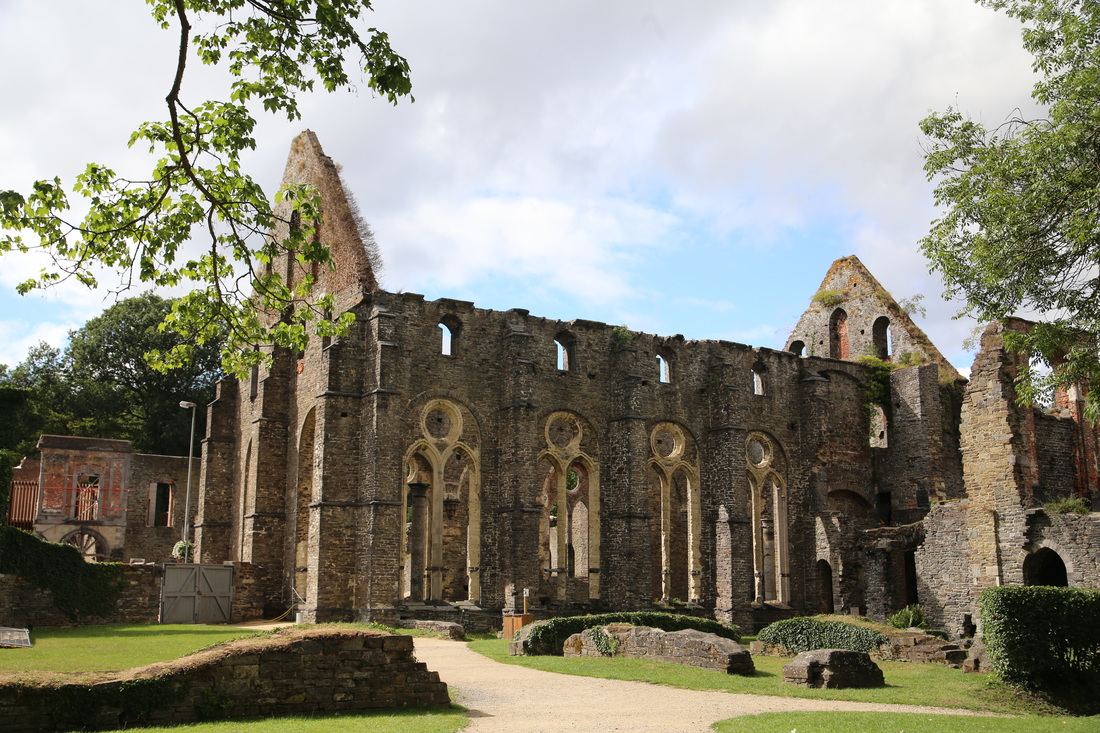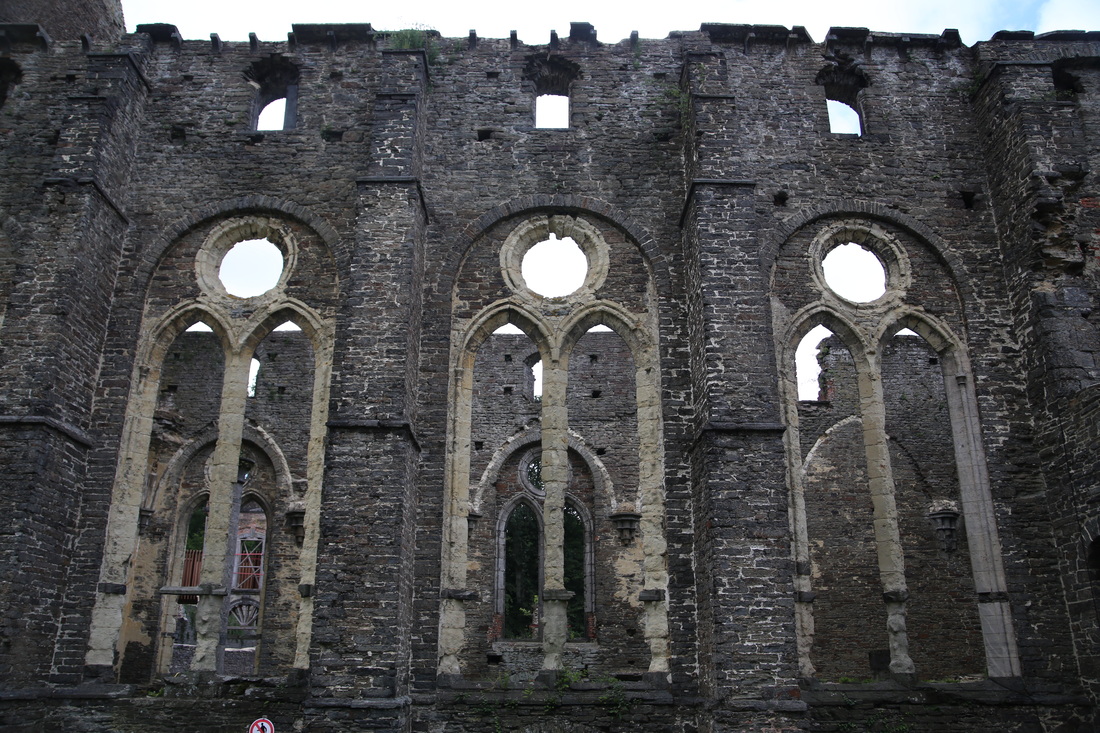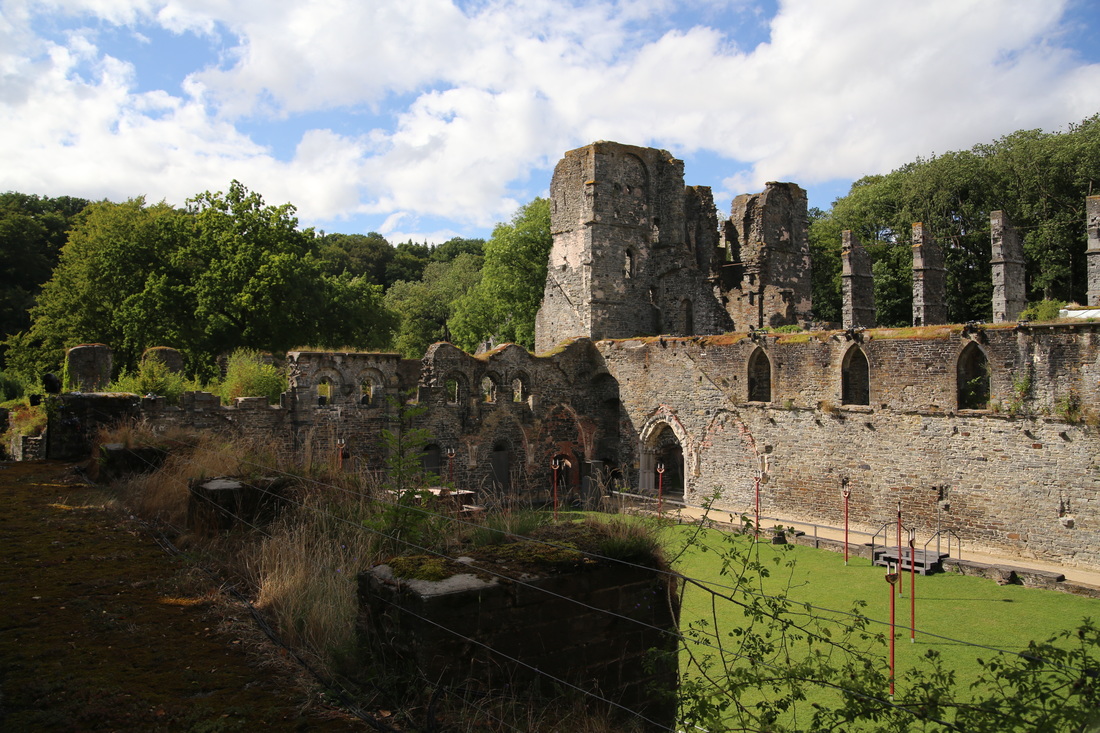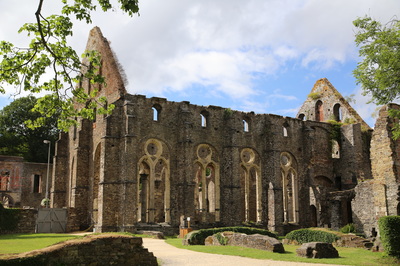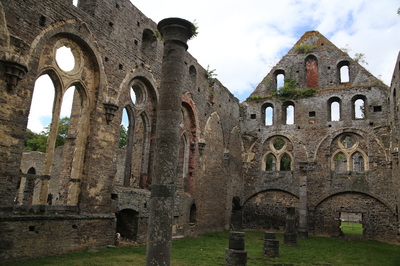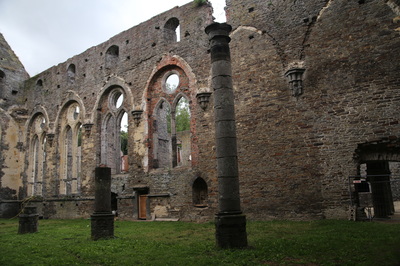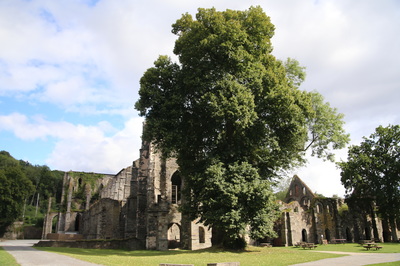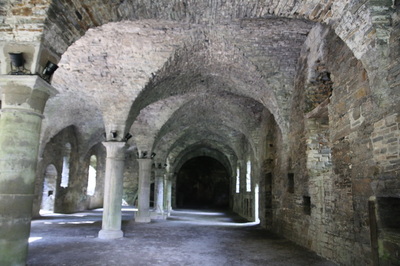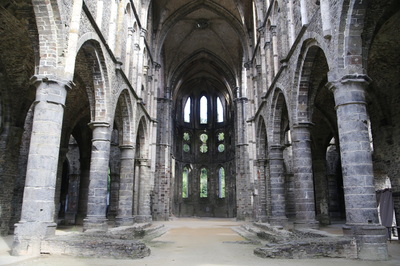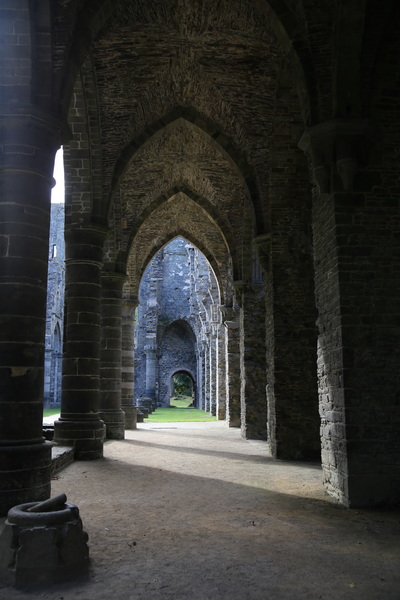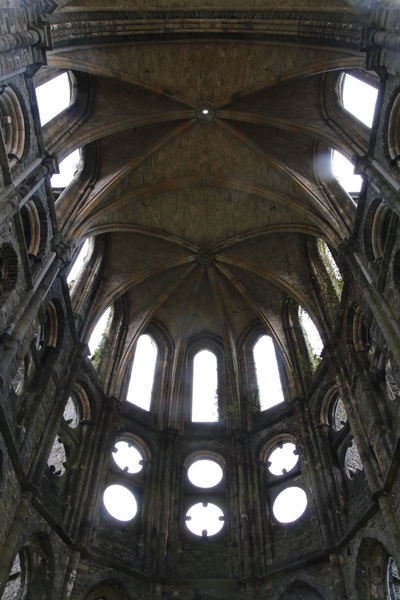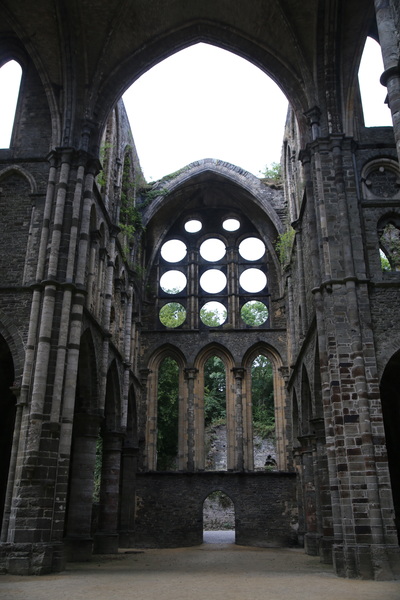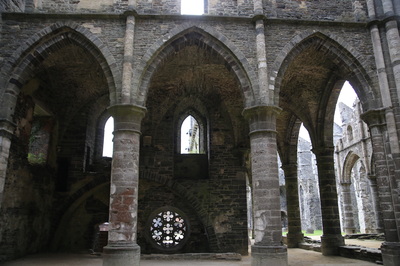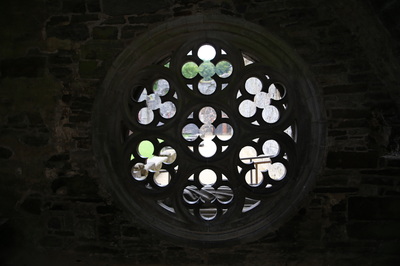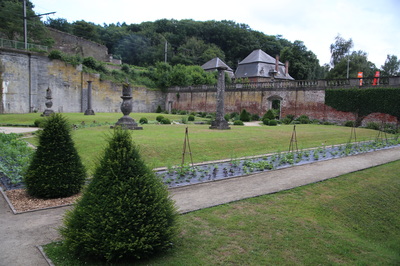Villers-la-ville
12 kilometers east of Nivelles is the ruined Cistercian abbey of Villers-la-Ville. The dark ruins of the once magnificent abbey are an excellent example of how the French Revolution treated places of worship. Monumental ruins, in which nature takes control of the surroundings, make an amazing impression. Although ruined, the abbey is a great testimony to the medieval monastery architecture.
Początki tego wspaniałego miejsca sięgają 1146 roku. Wtedy to grupa 12 mnichów, jeden opat, oraz 5 konwersów założyła tutaj, z polecenia św. Bernarda, filię klasztoru w Clairvaux. Z czasem opactwo zaczęło się rozrastać i czerpać dochody z tak rozległego gospodarstwa (10 tys. hektarów). Pozwoliło to na rozpoczęcie, w 1200 roku, budowy imponującego kompleksu klasztornego, na obszarze 15 hektarów. W 1217 roku powstał chór, w 1240 krypta, a w 1267 refektarz. XIII wiek to okres największego rozwoju opactwa. Wtedy to zamieszkiwało je około 100 mnichów i 300 braci zakonnych.
Opactwo pozostawało w średniowieczu znaczącym ośrodkiem kulturalnym. Jednak już w XVI wieku, w okresie wojen o Niderlandy, rozpoczął się jego powolny upadek. W 1544 roku, w czasie ataku wojsk hiszpańskich, znacznemu zniszczeniu uległ kościół i zabudowania klasztorne. Po tych doświadczeniach udało się opactwu podnieść z ruin. Ostateczny upadek nastąpił w 1794 roku. Klasztor splądrowali i zniszczyli francuscy rewolucjoniści.
Na szczęście w 1893 roku rząd Belgii wykupił tereny opactwa i rozpoczęto prace konserwatorskie. Dzięki temu, chociaż część tego imponującego zespołu klasztornego przetrwała do dziś. W roku 1973 ruiny opactwa cystersów Villers-la-Ville wpisano na listę zabytków.
Opactwo pozostawało w średniowieczu znaczącym ośrodkiem kulturalnym. Jednak już w XVI wieku, w okresie wojen o Niderlandy, rozpoczął się jego powolny upadek. W 1544 roku, w czasie ataku wojsk hiszpańskich, znacznemu zniszczeniu uległ kościół i zabudowania klasztorne. Po tych doświadczeniach udało się opactwu podnieść z ruin. Ostateczny upadek nastąpił w 1794 roku. Klasztor splądrowali i zniszczyli francuscy rewolucjoniści.
Na szczęście w 1893 roku rząd Belgii wykupił tereny opactwa i rozpoczęto prace konserwatorskie. Dzięki temu, chociaż część tego imponującego zespołu klasztornego przetrwała do dziś. W roku 1973 ruiny opactwa cystersów Villers-la-Ville wpisano na listę zabytków.
Największe wrażenie robią okazałe ruiny kościoła przyklasztornego, znajdującego się w północnym rogu kompleksu. Swoimi wymiarami przypominającego raczej katedrę niż cysterski kościół. 90 m długości, 40 m szerokości i 23 m wysokości w najwyższym punkcie to wymiary, które robią wielkie wrażenie. Jego wspaniała nawa podtrzymywana była przez potężne, cylindryczne kolumny. Transept i prezbiterium to pierwsze znane zabytki stylu gotyckiego w Brabancji. Ciekawe są również pokój grzewczy, pracownia, romańsko-gotycki refektarz, kuchnia, oraz położony na skraju całego kompleksu browar.
Opactwo oferuje również możliwość zwiedzania czterech ogrodów: ogród ziół medycznych, ogród mnichów, ogród opata, oraz ogród apteczny. Podczas zwiedzania ogrodów można poznać wiele średniowiecznych ziół stosowanych przez mnichów. Aby zobaczyć pięknie kwitnące zioła i kwiaty, należy odwiedzić opactwo w okresie od końca lipca do połowy września, kiedy to większość z nich zakwita. Zwiedzanie ogrodu jest wliczone w cenę biletu wstępu do opactwa.
Opactwo oferuje również możliwość zwiedzania czterech ogrodów: ogród ziół medycznych, ogród mnichów, ogród opata, oraz ogród apteczny. Podczas zwiedzania ogrodów można poznać wiele średniowiecznych ziół stosowanych przez mnichów. Aby zobaczyć pięknie kwitnące zioła i kwiaty, należy odwiedzić opactwo w okresie od końca lipca do połowy września, kiedy to większość z nich zakwita. Zwiedzanie ogrodu jest wliczone w cenę biletu wstępu do opactwa.
|
Address:
Rue de l'Abbaye, 55 1495 Villers-la-Ville Belgium |
Opening hours:
1 Listopada-31 Marca 10.00-17.00 otwarte codziennie 1 Kwietnia-31 Octoberdziernika 10.00-18.00 otwarte codziennie |
Ticket price:
Dorośli: 9 Euro Studenci: 7 Euro Dzieci (6-12 lat): 4 Euro Dzieci (mniej niż 6 lat): za darmo Audio przewodnik: 1,5 Euro |
